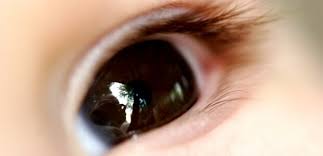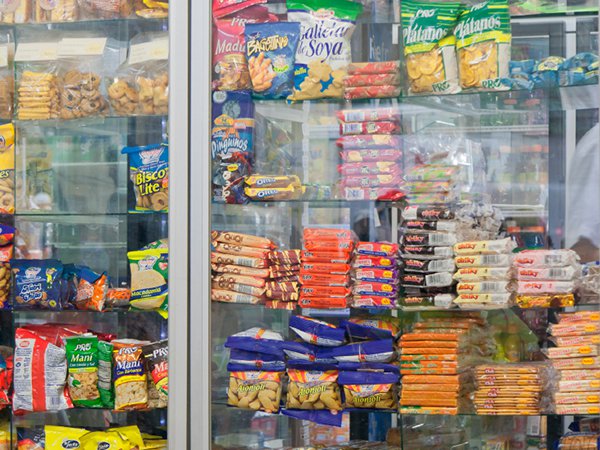Posted by Editor | Comments Off on What is Obsessive-Compulsive Disorder?
What is Obsessive-Compulsive Disorder?
Obsessive-compulsive disorder is a type of anxiety disorder characterized by recurring thoughts that drive a person to do something repetitively. The recurring thoughts become the obsession, while the repetitive acts become the compulsion.
How can obsession and compulsion affect in a person’s quality of life?

When Can Thoughts Become Obsessions?
There are several forms obsession can take. One is the preoccupation of contamination through the contact with germs, chemicals, and other substances that the person thinks will make him/her sick. Some are also afraid of coming into contact with other people whom they might contaminate or might contaminate them.
Obsession can also be in the form of fear of accidentally harming others and oneself. They think that if they fail to perform a ritual or compulsion, like cleaning an object, they will be bringing a disease that might harm them or other people living with them.
Some people also become obsessed with organizing objects in a certain way to produce exactness or symmetry. They will not feel right if they don’t do something exactly as they intended, or they feel that something unfortunate will happen if there is no order. They will also feel safer if they perform the ritual or avoid small mistakes. The person, however, is usually not aware of their obsession.

What are Examples of Compulsions?
Compulsions can also come in many forms, but most of these become rituals that are practiced excessively and are tied up to the obsession/s. The most common forms of compulsions are the following: excessive washing of hands, observing toilet rituals, washing specific parts of the body several times while bathing, rearranging or ordering things, checking things repetitively, mental rituals, excessive counting or touching objects, and cleaning compulsions.
These symptoms can change over time and may manifest as early as childhood. The obsession can change, and the rituals also vary. Most children with OCD also seek approval that they have done something right to feel safe or at ease, and even encourage family members to observe the same rituals.

How is OCD Treated?
The disorder is also misunderstood and is sometimes mislabeled when used on people who just love to keep things neat and orderly. OCD, however, isn’t simply wanting to keep things clean and organized. It is an uncontrolled, excessive behavior that can possibly affect the quality of life of the person and the people around him/her. Whereas cleaning the house can make others without OCD feel happy and accomplished, an individual with this disorder will not feel relieved or happy at all.
Fortunately, there are medications and therapies available to control these obsessions and compulsions. A combination of medication and psychotherapy is recommended for severe cases, but other accompanying disorders also must be treated. Medications recommended for OCD include selective serotonin reuptake inhibitors and serotonin reuptake inhibitors, usually in high dosages for at least 12 weeks.
Psychotherapy may be in the form of cognitive behavior therapy, habit reversal training, and exposure and response prevention.
Read MorePosted by Editor | Comments Off on Can Retinoblastoma be Treated?
Can Retinoblastoma be Treated?
Although retinoblastoma is a rare malignant cancer, it mostly affects children all over the world. In Singapore, it is the most common type of eye cancer, which accounts for half of such cases according to a study in 2000.
How Does It Start?
Like any type of cancer, the location of the cancer cells is important in the treatment approach. The location will also determine the likelihood of saving the person’s vision. Retinoblastoma can affect one or both eyes, but it rarely spreads from the eyes to other body parts. The illness affects children younger than 2 years because there is a fault in the process of eye formation while the baby is still in the womb. Retinoblasts or cells that are found during the formation of the eyes, do not mature into retinal cells, and instead keep dividing and growing uncontrollably. If not treated, the tumor can fill the eyeball, causing pressure, pain, and loss of vision.

Is it Related to Other Cancers?
Retinoblastoma begins in the retina, but the child can also be affected with another eye cancer or melanoma. This is rare, but the treatment approach will also be different if the child has other conditions that need to be addressed. The second most common eye cancer usually associated with retinoblastoma is medulloepithelioma, which begins in the eye’s ciliary body. Retinoblastoma can be inherited by the child and it has been found that the abnormality is associated with the mutation in the retinoblastoma gene, which can also develop sporadically.

How is it Treated?
There is no one treatment for retinoblastoma, because it must be approached based on its location, type, and the side effects. Most doctors recommend the usual treatments for most types of cancer such as cryotherapy, chemotherapy, thermotherapy, radiation therapy, surgery, targeted therapy, and stem cell rescue. A child with retinoblastoma will need a team of specialists who will make sure that the side effects of the treatments are minimized. There is also a risk of late side effects that will most likely affect the child as he/she grows up, such as; vision and hearing problems, memory and learning problems, and second cancers.

Can the Eye be Saved?
If the specialists can still save the eye, the person might have to go through systemic chemotherapy or an external-beam radiation therapy. If both eyes are affected, there might be different treatment approaches for each eye depending on the size of the tumor and the likelihood of saving each eye.
What is Enucleation?
One of the treatments for retinoblastoma is enucleation or surgery of the eye that aims to remove the affected eye and parts of the optic nerve. This is recommended if there is a suspicion that the caner cells have spread to other parts of the body or if the individual will most likely lose his/her sight. If the tumor is very large and the patient does not respond to other types of treatment, enucleation is also an option.
Posted by Editor | Comments Off on What are Childhood Cancers?
What are Childhood Cancers?
Perhaps most of the cancer-related health cases you have seen in media were about adults, but cancer can also affect children and even newborns. Childhood cancer be difficult and complicated to treat, but there are successful stories of survivors who made it past their treatments.
As a parent, you should be aware of the types of cancer that affect children, such as the following:

• Leukemia. This is perhaps the most common childhood cancer not just in Singapore but in most parts of the world. Leukemia among children is not easy to detect, unless it is an acute leukemia which develops suddenly. The following symptoms might show up gradually: bleeding and bruising even with a minor injury; recurring stomachache; difficulty breathing or wheezing and coughing; swelling in the arms, neck, collarbone and groin; frequent bacterial and viral infections; anemia; and frequent pain the joints and bones.
• Neuroblastoma. This type of cancer usually develops after childbirth and affects the adrenal glands. Symptoms include stomachaches, changes in the appetite, weakness in the legs and a formation of a hard mass in the neck that isn’t painful.
• Retinoblastoma. The malignant tumor starts in the retina and can potentially cause blindness of not treated early. Retinoblastoma is asymptomatic, but the parents might notice that the pupil becomes white when light is shone on the eyes.

• Lymphomas. As the name implies, lymphomas affect the lymphatic system and cause the lymph nodes to enlarge. Lymphomas can either be Hodgkin or non-Hodgkin in variety, with the former having a higher survival rate than the latter. Look for the following symptoms: swollen lymph nodes in the groin/armpits/chest, chest pain, fatigue, night sweats, weight loss, fever, abdominal pain, severe itching, and sensitivity to alcohol.
• Wilms Tumor. Also known as a type of kidney cancer or nephroblastoma, it usually affects just one kidney although two kidneys are not rare. Symptoms might not be noticeable, and they can vary among children, but you should look out for the following: abdominal mass, pain, and swelling; blood in the urine; constipation; nausea and vomiting; fever; hypertension; and shortness of breath.
• Brain and Spinal Cord Tumors. The symptoms vary among affected children, that is why it’s important to get an early diagnosis. Look out for the following: recurring morning headache and nausea; problems in speech, vision, hearing, balance, and walking; unusual sleepiness; seizures; increase in head size; back pain and pain in the arms and legs; changes in the bowel movements; difficulty urinating; and leg weakness.

• Bone Cancer. Two most common types of bone cancer, osteosarcoma and Ewing’s sarcoma, affect children. Symptoms include bone and/or joint pain, swelling, stiffness, and tenderness; lump on a bone; weak bones and frequent fractures; anemia; fatigue; difficulty moving; and weight loss.
• Rhabdomyosarcoma. This is a type of soft tissue sarcoma that affects the fibrous tissue or the muscles, usually in the bladder, head or neck, uterus, vagina, and testes. Some affected children also have tumors in the limbs, abdominal wall, and the chest. Symptoms include blockage and discharges in the throat and nose, swollen eye, abdominal pain, constipation, and blood in urine.
Read MorePosted by Editor | Comments Off on Eight Glasses of Water a Day
Eight Glasses of Water a Day
People do not usually give importance to hydration but what they do not realize is that without proper hydration, we are slowly leading our body to decay. Hydration is very important for a lot of things. One of the things hydration is useful for is circulation. Without proper hydration, the circulation of our blood within our body would not be normal. The circulation of our blood is very important if we are to function to our full potential. People do not realize that trying to function at their best without actually preparing for it would definitely not work.

Our body slowly gets weaker the more dehydrated we become. It may be hard to keep yourself regularly hydrated all throughout your day but water isn’t that hard to find. In fact, finding water around is really easy. All of the restaurants sell them, there are countless stores that all sell water and it is honestly not that expensive.
For those who do not enjoy water as a liquid, there are actually substitutes for that. There are certain fruits with a high water content which is good enough for you to be hydrated. Watermelon is a good fruit to keep you hydrated. If you enjoy the taste of watermelon, eating some throughout the day would be a great way to not just keep yourself hydrated but also a great fruit to snack on.

Drinking the right amount of water at the right time also helps your digestion and bowel movement. Keeping your body functioning at a healthy rate is very important. Your digestive system ban be a little tricky because it is not always about what you eat but also when you eat and the condition of your body while you are eating. A good digestive system is a great way for you to be able to enjoy your life to the fullest since you will be able to not only eat but also enjoy the nutrients you get from your food all throughout the day.
Now, is eight glasses a day really necessary? Well, yes! It is the perfect amount of water we should be drinking everyday. Drinking two glasses of water per meal and one glass of water in between breakfast and lunch and another one glass of water during the afternoon. Easy right? Well, you can drink more water than that. There’s actually no such thing as too much water. Unless of course you aren’t able to get healthy food together with your water.

Staying hydrated throughout your life is a great way for you to enjoy it. Don’t forget to drink water every now and then.
Read MorePosted by Editor | Comments Off on What are Some Healthy Alternatives To Coffee?
What are Some Healthy Alternatives To Coffee?
Coffee is known to have benefits on the body. Healthy amount of coffee yields to better concentration and state of mind, thus allowing a worker to achieve maximum work productivity. While it is effective in that manner, the drink can also turn to be a hazard if consumed in unhealthy amounts.
Cutting back on your coffee intake means you’re training yourself not to be solely dependent on the drink; so here are some alternatives to give you that caffeine boost you need!

Yerba mate
Yerba Mate is renowned to have the same strength of coffee, euphoria of eating chocolate, and the many health benefits of tea. It is a celebrated drink made from the leaves of the South American holly tree. For those who are unable to start the day without having a cup of coffee, yerba mate is a great alternative. It gives the same kick of energy coffee has, with all the essential nutrients on that. It can be consumed in different ways: cold, hot, with honey, or in a tea infuser.
Kombucha tea
A type of yeast, Kombucha is popularly served as tea in many countries after fermenting it together with sugar, tea, and other necessary flavors. This drink can be a great substitute for coffee. There are lots of health benefits attributed to kombucha. Some of them include regulating the body’s bowel movement, preventing cancer and other diseases, reducing high blood pressure, and more.

Tea
Both rich in caffeine, tea is encouraged more than coffee thanks to the many benefits it brings to the body. Teas range in myriad of blends and kinds, and they can either be drunk hot or cold depending on your preference. You can select from the many specialty teas sold in the market; such as black, herbal, or green tea. They are easily accessible in almost all grocery stores. Some are also sweet enough that you don’t necessarily have to throw in some sugar!
Coconut water
Coconut water recently became popular thanks to its growing consumer number. It is one healthy drink which is still increasingly getting famous by the day; a clear, milky liquid which is made out of fresh young coconuts. This coconut drink is naturally sweet, saving you from artificial sweeteners. It is also rich in rehydrating electrolytes and bioactive enzymes, making it a good replacement for even sports drinks.

Sparkling water
Although deemed as a boring beverage by many, sparkling water is one refreshing alternative to satisfy your coffee cravings while hydrating you in the process. You’ll be surprised to realize how sparkling water is actually delicious and hydrating especially when the drink is flavored with all-natural, sugar-free fruit extracts. There is a number of sparkling waters sold in the market you can choose from!
Posted by Editor | Comments Off on 6 Foods to Avoid If Battling Depression
6 Foods to Avoid If Battling Depression
When fighting depression, simple food choices can make a huge difference between feeling worse and feeling more stable. Although burgers and ice cream don’t make us feel anxious or suicidal, too much of these junk foods can cause unfavorable effects to your body’s natural chemistry that might affect your coping mechanism from depression.
If you are someone diagnosed with depression, here’s a list of foods you’re better off avoiding.
1. Alcohol
Alcohol is a central nervous system depressant. If you’re managing mood disorder, better avoid any form of alcoholic drink. Since the central nervous system controls the thinking, reasoning and understanding functions of the brain, it’s a guarantee that it can control your emotions as well. If you drink too much alcohol, it slows down the function of the system, triggering symptoms of depression.

2. Refined Sugar
A bar of chocolate tastes good and provides us that spike of energy. But after 20 minutes, your blood sugar levels plummet, resulting to sugar hangover that depletes your energy, negatively affects your mood and possibly causes sleep disorder, which can further trigger depression.
3. Caffeine
If you are fully dedicated to managing your depression, keep in mind that even moderate amount of coffee can contribute to anxiety and depression. Caffeine is known to disrupt sleeping patterns, making it difficult for you to feel sleepy and stay asleep. It can also cause tremors, nervousness and agitation, which can affect your mood.

4. Hydrogenated Oil
Foods rich in hydrogenated oil are those that are deep fried, such as fried chicken, calamari, cheese sticks and your favorite French fries. Anything deep fried in oil and contains high amount of trans fat can potentially trigger symptoms of depression. Similarly, watch out for foods high in saturated fats, such as butter, regular dairy products and deli meats, as they can trigger the same effects as deep fried foods.
5. Processed Foods
Consuming foods with processed or refined carbohydrates, like cereals, donuts, white bread and pasta, will have the same impact as eating an entire bar of chocolate. After the short time of insulin boost, you will end up feeling irritated, tired and blue.

6. Soy
Tofu and soy milk may be good for the health, but not for someone coping with depression. Although soy is packed with protein, it is also rich in trypsin and protease inhibitors, which are enzymes that make digestion of protein difficult. Also, soy is high in copper, a mineral that’s said to contribute to anxious behavior. If you must include soy to your diet, stick to fermented varieties like miso and tempeh for easier digestion.
Whether you’re fighting depression or just on a diet, remember that feeding with crap will make your feel like crap. If you feed your body with the right food, it will return the favor of making you feel good inside and out.
Read More
